“We are what we repeatedly do. Excellence then is not an act, but a habit”
Now Aristotle may not have said the above quote (actually it was Will Durant, who wrote it in his 1926 book – “The Story of Philosophy”), but this quote is a very factual depiction of the Aristotelian spirit and would be how the life of – Gaius Appuleius Diocles, may have been described by the ancient Greek philosopher, had he seen it himself.
Gaius Appuleius Diocles is not a name that most of us would be able to recognize in today’s world. However, approximately 1900 years back his name was not unknown in the greatest empire of the time – The Roman Empire. As a charioteer and a celebrated athlete of ancient Rome, he left his imprint in history as – Gaius Appuleius Diocles highest-paid athlete of the world, modern times included.
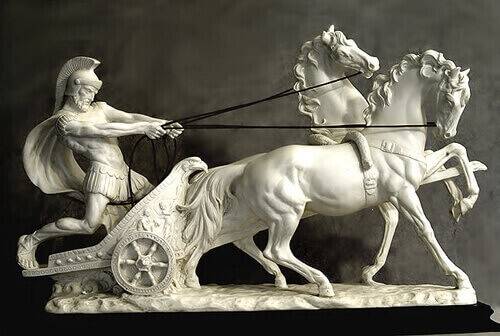
When we describe Gaius Appuleius Diocles as highest paid athlete of all time, it is because Gaius Appuleius Diocles’s net worth by the time he retired was equal to more than $15 Billion in terms of modern world’s financial wealth calculation, making Gaius Appuleius Diocles highest paid athlete of all time.
Gaius Appuleius Diocles was born in 104 A.D. in Lamecum, which was the capital city of the Lusitania, (now Lamego, Portugal), - a province of the Roman empire of the time. His father had a small transport business & it is believed that the family was relatively well off. Gaius Appuleius Diocles, who is believed to have been an illiterate man started racing chariots at a relatively young age of 18 in llerda (in modern-day Catalonia, Spain).
Gaius Appuleius Diocles soon proved himself excellent in his work and victories achieved in the field inspired him to dream bigger dreams. As this was a time when all the roads led to Rome, that is where he soon found himself; to chase a bigger dream and compete in a race with higher stakes.
Gaius Appuleius Diocles was lucky in the sense that he had reached the right place at the right moment. The emperor and the ruling elite took a special interest in keeping the citizens entertained (described by many intellectuals, as a means of diverting the attention of the poor and downtrodden people from important issues) by different means available, most common of which were the chariot races and gladiatorial fights.

The chariot races in the Roman empire were held in circuses, which loosely translated meant large open-air venues where public events were held. The most important among these circuses was the one in Rome, which was known as – Circus Maximus. The reconstruction undertaken by Emperor Trajan in 103 A.D. had given Circus Maximus its definitive form and added to its grandeur. The largest oval-shaped stadium of the ancient Roman Empire, Circus Maximus had a seating capacity of over 150,000 and had a length of 621 meters and was 140 to 150 meters in width, where chariot races were held.
Gaius Appuleius Diocles started his racing carrier in Rome in 122 A.D. and would not win any contest here for the next 2 years. Like the modern world’s racing competitions, there also used to be many different stables/teams (factiones) competing in the races in ancient Rome. The teams were responsible for the training and development of horses & maintenance of the equipment.
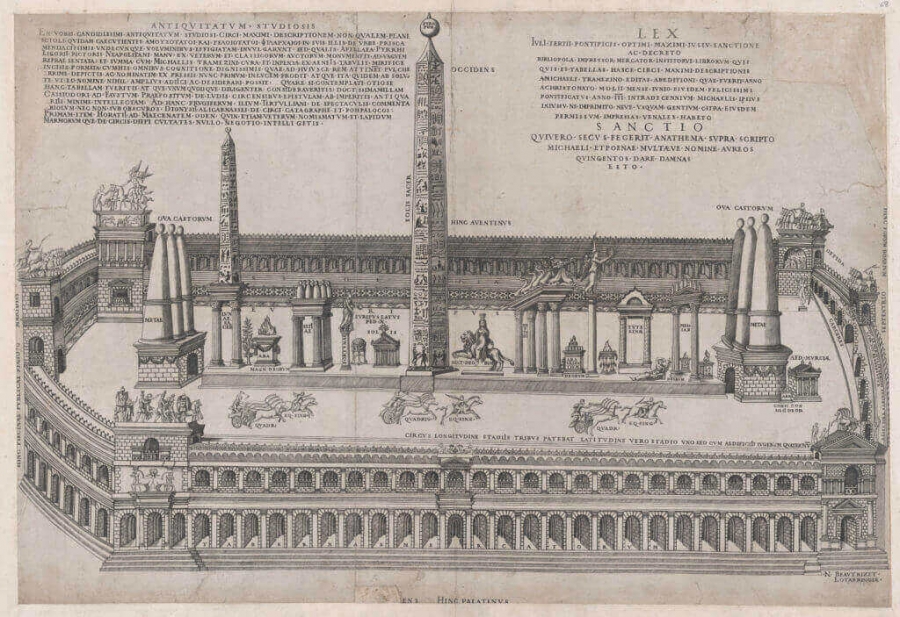
The most famous stables/teams of the time were the – White, Blue, Green & Red (the racing colors worn by the charioteers of the team). Most charioteers of the time in those teams came from lower orders of the society. Gaius Appuleius Diocles would go on to start his career in Rome with the White team, whom he joined initially. However, Gaius Appuleius Diocles would not stay in the White team for long.
As he started winning competitions, his name and fame began to spread. He became known as Lamecus (from his native city of Lamecum) and brought name and fame to his hometown. In 128 A.D. he changed his allegiance & his team and joined the Greens, which was the most popular team of the time & had the best charioteers. However, Gaius Appuleius Diocles would not stay there for long and in 131 A.D. he joined the Reds.
Joining a team that was less popular (than Green) wouldn’t have appeared to be the best decision at the time, but it did not impair Gaius Appuleius Diocles’s popularity in any way. Some scholars believe that as Green team had the best sportsmen of the time, so by moving to the Red team Gaius Appuleius Diocles positioned himself in a team, where the highlight would stay on him and he would also get the best of financial dividends.
Anyway, this change of team did not hinder his career in any way and Gaius Appuleius Diocles would spend the remaining of his racing career (which would be fruitful next 15 years) in the Red team only before he retired from the sport. In all, Gaius Appuleius Diocles would take part in an astounding 4257 races and would go on to win in 1462 occasions. In another 1438 races, he achieved some notable position (mostly second).
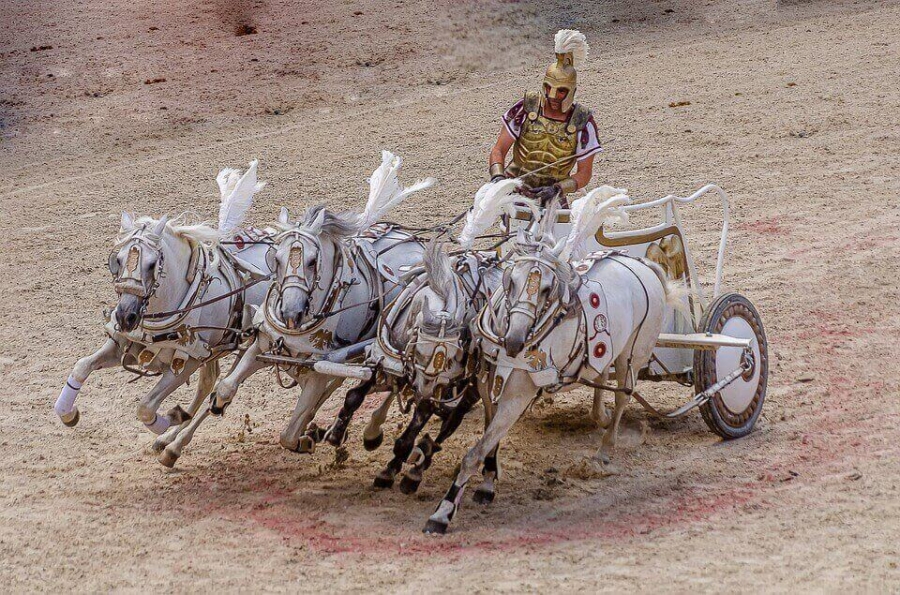
Gaius Appuleius Diocles’s skills as a charioteer could be understood from the fact that he reached his 100th victory in a single year, an achievement that was very not very common among the charioteers of the time.
Gaius Appuleius Diocles most commonly raced 4 horse chariots, which were known as quadrigae. However, records have shown that the number of horses hitched to his chariot was not always the same. Besides 4 horse chariots, he also rode two-horse, three horse, six-horse & even seven-horse chariots. The 6 horse or 7 horse chariot races, were especially attractive because of the difficulty to manage the horses, ensured that the prize money was also much more than other kinds of chariot competitions.
Besides competing in direct individual races, Gaius Appuleius Diocles also competed in team events where 2 to 3 chariots raced against the same number of chariots of another team. He also achieved 398 victories in these team events, although it is important to remember here that in races like these the performance of the entire team was important & not just a single individual.
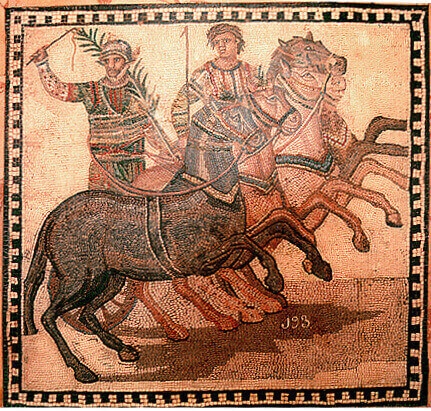
It is estimated that Gaius Appuleius Diocles competed in around 177 races per year (average) and his career which stretched for 24 years ensured that he had ample time to compete in many races & earn the fortune, which made Gaius Appuleius Diocles highest paid athlete of all time.
Gaius Appuleius Diocles was an astute businessman when it came to choosing his races. It is said that 1064 of his victories came in single entry races, which put the best driver of each team against the best driver of other teams. The prestige of winning these tournaments was immense and these directly translated into financial gains.
Gaius Appuleius Diocles also won around 110 opening races, which followed a great street parade, where charioteers used to be part of the fabulous procession. Needless to say, winning the initial races, attracted great attention which kept the focus of the crowd even later on in the early winners & Gaius Appuleius Diocles especially indulged in these to ensure that the spotlight would always stay on him.
Gaius Appuleius Diocles was also a great showman, who had also perfected another maneuver that was extremely popular with the crowds. In many races, he trailed behind his opponents in the beginning, but towards the end of the races, he would overtake them at the last moment, thus winning the race, which would drive the crowd of people present mad with excitement and would bring Gaius Appuleius Diocles more publicity, fame & money.
Gaius Appuleius Diocles knew that he was risking his life by such antics, but he kept on pushing the boundaries of what was possible. He once raced a chariot pulled by 7 unyoked horses, and managed to win the race, ignoring the threat to his life. Races like these were risky but the winner received a great amount in prize money, which made this an attractive proposition for Gaius Appuleius Diocles. In this case, Gaius Appuleius Diocles managed to win 50,000 sesterces for his risky victory.
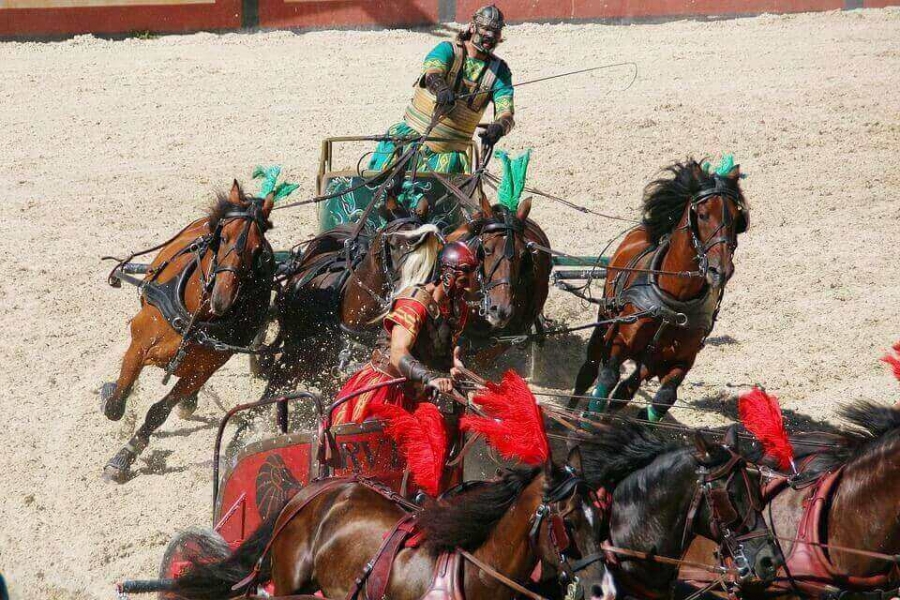
Here it would be important to mention that the charioteers in the racing competition would wear leather helmets, simple chest armor for protection & shin guards. Besides the whip for controlling the horses, they would carry with them one knife to cut themselves loose if they got tangled in the reins of their horses in some freak accident (the charioteers of the time wrapped the reins tightly around their waists, so they could use their body weight to control the horses, but this could become very dangerous in case of accidents, as the charioteers could be dragged along).
It is beyond doubt that Gaius Appuleius Diocles was very good in his field, but even the best can’t win every time and Gaius Appuleius Diocles had also his share of defeats. In about 1351 races he failed to get any position. Neither did he had the record for winning the maximum number of tournaments.
Gaius Appuleius Diocles was no doubt one of the best charioteers of his time, but Rome had many other charioteers too, who had managed to win many more competitions than him. For example – Pompeius Musclosus had 3599 victories & Flavius Scorpas had 2048 victories (both charioteers raced for the Green team) but still Gaius Appuleius Diocles although having fewer victories compared to aforesaid charioteers, had earned much more money than them, because of picking up races, where victory gave the greatest dividends.
Gaius Appuleius Diocles’s life was different from his other fellow charioteers, not in the fact that he earned much more than them but also the fact that he lived long enough to enjoy the wealth and fame his victories had brought him.
Chariot racing was a dangerous sport and many charioteers had met a ghastly end when life was cut short by some horrible accidents. Loss of a wheel with the chariot becoming a death chamber was very common or a driver could get entangled in the horse reins or he could be crushed by a chariot coming from behind.
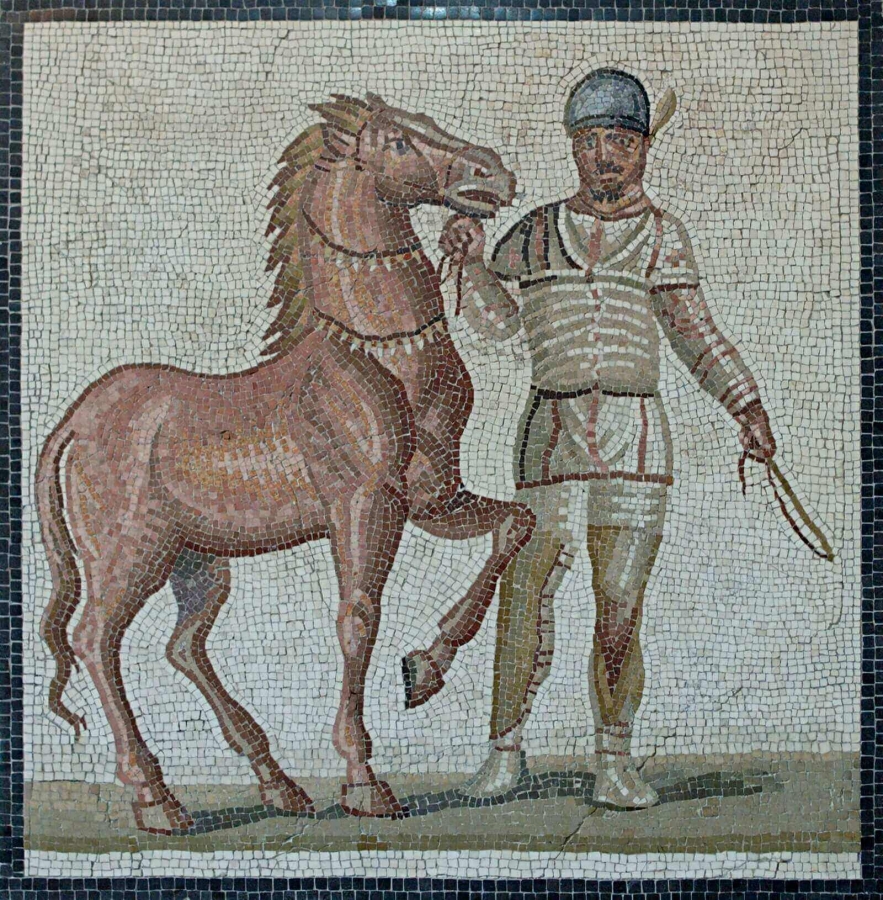
Every show of heroic skill in the field was fraught with danger. The fact that Gaius Appuleius Diocles could participate, survive and win an astronomical amount of wealth, competing for 24 years was a miracle in itself.
Gaius Appuleius Diocles after his retirement settled down in the Italian hill town of Praeneste (modern Palestrina), where he would buy large areas of land. Here he would spend the remaining part of his life peacefully with his family members. Unlike many other charioteers, Gaius Appuleius Diocles’s death would not be in a racing field but he would die of old age, in peace sometime after 146 A.D.
Gaius Appuleius Diocles the highest paid athlete of all times, achievements when examined closely, also assume more importance when we consider the fact that his earnings were achieved through only the prize money he won in the races, during his 24-year long career & not through sponsorships or any other avenues like advertisements.
It is estimated that Gaius Appuleius Diocles, who otherwise was an illiterate person would go on to earn an astounding amount of 35, 863,120 sesterces (which is equal to $15 Billion in today’s currency) in prize money by his victory in chariot races over a rather very long period of 24 years. His lifetime earnings were 5 times more than the earnings of the highest-paid governors of a Roman province, of that time, over the same time period.
In other terms, his lifetime income was sufficient to provide grain for feeding the population of the entire city of Rome for 1 year; or to pay all the ordinary Roman soldiers of the Roman army (at the heights of Roman conquest) for 1/5th of a year.
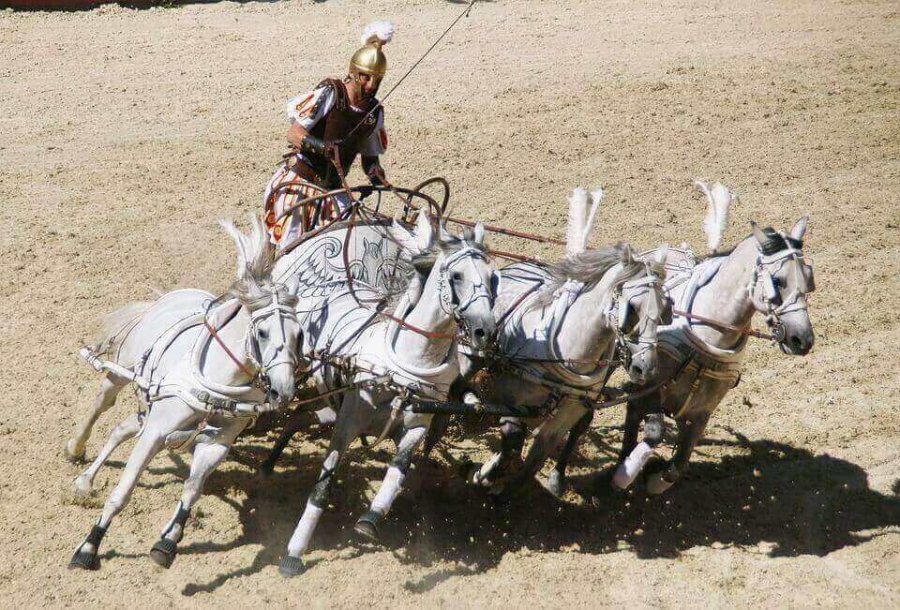
Gaius Appuleius Diocles was loved by the people and his fans had named him “Champion of all charioteers”. His son and daughter later erected a dedication to his name in the town where he spent his final years. Gaius Appuleius Diocles’s statue would be also built in different cities to commemorate his victories, which would keep him in the memory of people long after he was gone.
However, Gaius Appuleius Diocles’s greatest achievement would not be to become the highest paid athlete of all time. His greatness was also not because of the number of statues & monuments erected and dedicated to him. His act of surviving 24 years in the merciless racing track, where many charioteers died in their young age is also admirable, but perhaps Gaius Appuleius Diocles’s greatest achievement is leaving behind a legacy, which remains as strong as it was almost 1900 years ago.